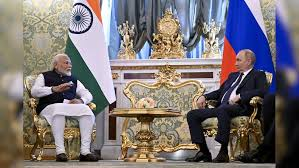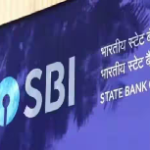Written by Rajorshi Roy
Indian Prime Minister Narendra Modi recently undertook a “productive” official trip to Moscow. This was his first visit to Russia in five years and marked the resumption of the India-Russia annual summit, which had been on hold since 2021. The suspension of the summit seemed to indicate a drift in the bilateral relationship. India’s strengthening ties with the West amidst Russia’s entente with China had also added to this perception. Yet, Indian media reports attribute the Covid-19 pandemic as well as Russia’s preoccupation with the war in Ukraine as the key reasons why the summit did not take place for the past three years.
The tone, tenor, and scope of discussions during Modi’s visit to Russia indicate a shared desire to build new equations and expand the strategic partnership. The unique shift of the economic agenda taking center stage over defense, a first in the history of India-Russia annual summits, underscores the evolving nature of their relationship. This optimism for the future is aptly highlighted in the two joint statements. The first, titled “Enduring and Expanding Partnership,” outlines their shared interests at both global and regional levels. The themes (defense, security, trade, connectivity, energy, nuclear, space, education, science and technology, people-to-people, counterterrorism, and cooperation at multilateral fora) reflect the depth of their mutually beneficial ties and the commitment to adding more pillars to the strategic partnership, signaling a positive trajectory for India-Russia relations.
The second statement focuses exclusively on unlocking their economic potential, long considered the weakest link in the relationship. Boosting connectivity, banking channels, and national currencies in economic exchanges have been prioritized. These steps can make trade and financial linkages more broad-based and balanced. At present, oil imports from Russia dominate India-Russia bilateral trade, leading to a widening trade imbalance. Notably, the new goal of achieving USD$ 100 billion in trade by 2030 will mark Russia’s entry into India’s $100 billion bilateral trade club comprising the United States, China, and the European Union.
Similarly, both sides sought to address the irritants and gaps in their relationship. These involved the release of Indian citizens from the Russian army as well as a shortage of defense equipment and spare parts. The announcement of a joint parts manufacturing unit in India is timely. Approximately 45 percent of India’s military equipment is of Russian origin. The new spare parts manufacturing unit will also cater to the requirements of other countries using Russian arms, with the concurrence of both New Delhi and Moscow. It is particularly relevant amidst the perceived inability of Russia today to meet export timelines due to its preoccupation with the war in Ukraine. This mechanism of third-party exports of spare parts can, thus, add a new dimension to the India-Russia defense collaboration. Meanwhile, strengthening contacts with the new generation and academia has been prioritized to overcome the prevailing information gap. The opening of two new consulates in Kazan and Yekaterinburg and the introduction of e-visas are part of this endeavor.
Symbolism, Signalling, and Salience
By making Russia the destination of his first foreign bilateral visit since being elected a third time, Modi has sent a strategic message to Moscow. After being elected in 2014 and then for a second term in 2019, Modi visited South Asian countries first, indicating India’s “Neighborhood First” policy toward South Asia and highlighting the pecking order of India’s foreign policy priorities. Similarly, Russia’s conferment of its highest national award, “Order of St Andrew,” to Modi, and Putin hosting the Indian Prime Minister in his private residence, a rare privilege, is symbolic of Russia’s strategic messaging to India about its India-centric priorities.
The visit also signals to the West that India is compartmentalizing its global partnerships based on national interests. The rationale of a robust partnership with Russia outweighs the Western pressure on India to boycott Moscow. The new India-Russia economic vision outlined in the summit will likely clash with the Western attempts to isolate Moscow.
Incidentally, Russia, too, is likely to leverage Modi’s visit to signal its continued relevance to the global community. Moscow could also be signaling to China its own independent course of action. This comes amidst perceptions of it now being a subordinate partner of Beijing. China has been vocal in calling on Russia to refrain from selling weapons to India amidst the ongoing India-China border standoff. Deftly maintaining its strategic autonomy, Russia continues to sell weapons to India. Russia has also given its tacit approval to India to sell the BrahMos missiles, an Indo-Russian joint venture, to the Philippines, which are are meant to deter China in the South China Sea. Arguably, Russia’s ability to project itself as a pole is anchored to it taking independent actions rather than being seen as riding the coattails of China.
India and Russia’s markets – the size of the former and the Western boycott of the latter – present fresh opportunities of collaboration. The purchase of Russian oil and fertilizers at discounted prices has kept India’s inflation in check, thereby contributing to India’s growth story. Incidentally, India’s intake of Russian oil has also acted as a global shock absorber for potential runaway oil prices caused by Europe’s boycott of Russian energy. Meanwhile, India’s membership in non-Western organizations (BRICS and Shanghai Cooperation Organization) promoted by Russia, as part of Moscow’s aspiration to be counted as a pole, strengthens the credibility of these agencies as viable alternatives to Western institutions rather than anti-West cliques.
Rebooting Ties
This relationship has served both countries well. However, the evolving geopolitical landscape has made several old templates redundant. In an era of multi-alignment, India and Russia have often adjusted to diverging priorities. This has seen India leaning on the West for its economic modernization and tackling the China threat on India’s doorstep while Moscow courts Beijing to withstand Western pressure. A key challenge, therefore, will be to insulate their bilateral relationship from the pulls and pressures of their ongoing friction with others. Arguably, it is in both the United States and China’s interests to dilute the strength of the India-Russia partnership.
A reinvention of ties is likely the way forward to stay relevant in their foreign policy outlook. Nurturing sensitivities and having robust strategic communication can help remove misgivings about engagements with others. Neutrality is a viable tool for navigating some of these tricky situations. Overcoming the chinks in their armor will also be crucial. These include information gaps, people-to-people contacts, connectivity, concentrated economic linkages, bilateral payment mechanisms, trade imbalance, defense supplies, and Western sanctions.
A recalibration in the defense partnership—long considered the backbone of ties—is also in the offing. Over-dependence on one source is inadvisable. Nevertheless, the long shelf life of military equipment implies that Russia will continue to be a key pillar of India’s defense for the foreseeable future. Perhaps, the onus is on Russia to complement the “Make in India” initiative by offering unmatched cutting-edge defense technologies. Its track record in co-developing the Brahmos could hold Russia in good stead. The recent induction of AK-203 rifles, an Indo-Russian joint venture, which is likely to be the mainstay of Indian armed forces indicates new offshoots of collaboration.
Crucially, a drift in their ties can have repercussions across a wide spectrum. None perhaps more significant than on their strategic autonomy as well as strategic balance in their neighborhoods. A Russia without partners of global and regional heft is likely to lean further on China. This would inevitably strengthen Beijing’s position in Asia and the world. Neither India nor Russia would be better off in such a scenario. Weaning Russia away from China by adding more pillars to the India-Russian bilateral relationship is, therefore, in India’s national interest.
Modi’s visit has shown that India and Russia will likely continue to seek mutual congruence. The emerging headwinds, though, will be an actual litmus test of the ‘special and privileged’ India-Russia strategic partnership.



